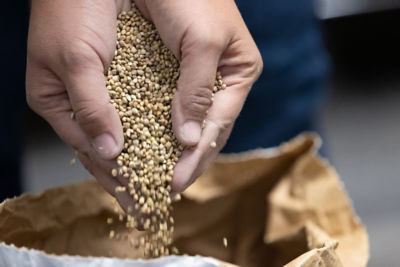Causal Agent
Phytoplasma
Vector
Brown Leafhopper (Orosius argentatus)
Distribution
Australia, Brazil, India, Israel, Russia and USA
Symptoms
The primary symptom of this disease, and the one for which it is named, is the enlargement and abnormal development of the flower buds. Sepals may not separate as the flower opens, and the buds will be swollen and green. Other symptoms include a thickening of stems, proliferation of small side-shoots and aerial root initials. Shortening of the internodes, an erect growth habit and the development of an overall yellowish appearance of the plant may also occur. Fruit may be small and deformed.
 Phytoplasma-infected plant with enlarged flower buds.
Phytoplasma-infected plant with enlarged flower buds.
Conditions for Development
This phytoplasma can survive in crops such as hot pepper, lettuce, eggplant and potato, as well as weeds such as dock, lamb’s-quarter, nightshade, sowthistle and jimsonweed. It is readily transmitted to tomato by the common brown leafhopper. Transmission occurs when leafhoppers carrying the phytoplasma migrate to tomato and feed.
Control
Big Bud is generally only of occasional importance. Removing host weeds adjacent to tomato plants and controlling the leafhopper vectors with an insecticide program are usually sufficient.




